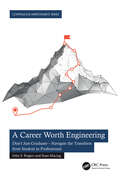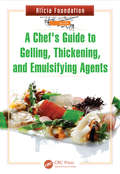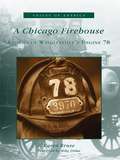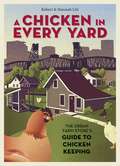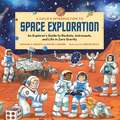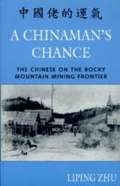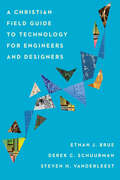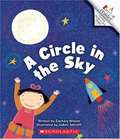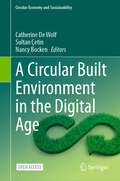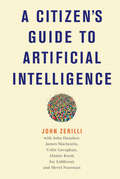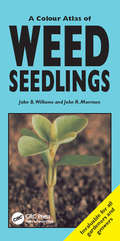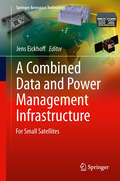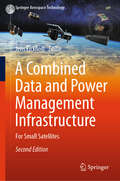- Table View
- List View
A Career Worth Engineering: Don't Just Graduate—Navigate the Transition from Student to Professional (Continuous Improvement Series)
by John S. Rogers Sean MaciagTransitioning from student to professional can be a challenging journey, but it doesn't have to be a daunting mystery. In A Career Worth Engineering: Don't Just Graduate—Navigate the Transition from Student to Profession, the authors draw from their own experiences and share valuable lessons learned in the foundational years of their careers.The authors offer practical steps and insights to empower readers to take control of their career paths. By sharing their experiences, they aim to help others navigate the challenges and uncertainties of transitioning from student to professional. This book is designed to accelerate career growth and help individuals achieve their full potential, goals, and confidence in the engineering field.This book is a guide for new engineering students, recent graduates searching for their first job, or professionals feeling stagnant in their careers.
A Case Study for Computer Ethics in Context: The Scandal in Academia
by Michael James Heron Pauline Helen BelfordAimed at addressing the difficulties associated with teaching often abstract elements of technical ethics, this book is an extended fictional case study into the complexities of technology and social structures in complex organizations. Within this case study, an accidental discovery reveals that the algorithms of Professor John Blackbriar are not quite what they were purported to be. Over the course of 14 newspaper articles, a nebula of professional malpractice and ethical compromise is revealed, ultimately destroying the career of a prominent, successful academic.The case study touches on many topics relevant to ethics and professional conduct in computer science, and on the social structures within which computer science functions. Themes range from the growing influence of generative AI to the difficulties in explaining complex technical processes to a general audience, also touching on the environmental consequences of blockchain technology and the disproportionate gender impacts of Coronavirus. Each new revelation in the case study unveils further layers of complexity and compromise, leading to new technical and social issues that need to be addressed.Directly aimed at making ethics in the digital age accessible through the use of real-world examples, this book appeals to computer science students at all levels of the educational system, as well as making an excellent accompaniment to lecturers and course convenors alike.
A Century of Plant Virology in India
by Bikash Mandal Govind Pratap Rao Virendra Kumar Baranwal Rakesh Kumar JainThe book is a compilation of research work carried out on plant viruses during past 100 years in India. Plant viruses are important constraints in Indian agriculture. Tropical and sub-tropical environments and intensive crop cultivation practices ideally favours perpetuation of numerous plant viruses and their vectors in India, which often cause wide spread crop losses. Of all the plant pathogens, studies of plant viruses have received a special attention as they are difficult to manage. A large body of literature has been published on the plant virus research from India during past 100 years; however the information is so far not available in one place. This book provides comprehensive information on the biology, molecular biology, epidemics, crop losses, diagnosis and management of viruses and viroids occurring in India. Description of properties of the viruses are provided in the chapters comprising of different genera such as Allexivirus, Begomovirus, Babuvirus, Badnavirus, Carlavirus, Carmovirus, Cucumovirus, Closterovirus, Ilavirus, Mandrivirus, Potyvirus, Tospovirus, Tungrovirus and Sobemovirus. Virus-vector research related to aphid, thrips and whitefly is discussed. The work on the management aspects of plant viral diseases has been described with reference to the conventional, antiviral and transgenic approaches. Further, the quarantine mechanism developed in India for the exclusion of viruses and vectors has also been included. The book also provides useful information about the capacity building on the research and education on Plant Virology in India. Overall, the book covers a wide range of accounts of research findings and innovations in Plant Virology in India during past 100 years. The book will be a resourceful reference to the students, scientists, agricultural professionals and policy makers.
A Century of Subways: Celebrating 100 Years of New York's Underground Railways
by Brian J. CudahyThe transit historian and author of Under the Sidewalks of New York delivers a lively and authoritative history of New York City&’s fabled subway. On the afternoon of October 27, 1904, ordinary New Yorkers descended beneath the sidewalks for the first time to ride the electric-powered trains of the newly inaugurated Interborough Rapid Transit System. More than a century later, the subway has expanded greatly, weaving its way into the fabric of New York&’s unique and diverse urban life. In A Century of Subways, transit historian Brian J. Cudahy offers a fascinating tribute to New York&’s storied and historic subway system, from its earliest beginnings and many architectural achievements, to the ways it helped shape today&’s modern metropolis. Taking a fresh look at one of the marvels of the twentieth century, Cudahy creates a vivid sense of this extraordinary system and the myriad ways the city was transformed once New Yorkers started riding below the ground.
A Chef's Guide to Gelling, Thickening, and Emulsifying Agents
by Alicia FoundationThe use of food texturizing agents, such as gels, thickeners, and emulsifiers, has been steadily increasing in the culinary industry. Understanding how to use these texturizing agents is important for chefs of all levels, from professionals to culinary students and amateur cooks. From Alicia Foundation, the culinary research center driven by famed
A Chicago Firehouse: Stories of Wrigleyville's Engine 78 (Voices of America)
by Mike Ditka Karen KruseFrom its humble beginnings in 1884 as a one-story frame building with one bay to house Hose Company 4 and its team of horses, Engine Company 78 has been the firefighting sentinel at the end of Waveland Avenue, sitting in the shadow of Wrigley Field. Using vintage photographs and moving stories from firefighters themselves, Karen Kruse captures the spirit and heroism of this historic Chicago landmark. Captain Robert F. Kruse served the Chicago Fire Department for 30 years, half of those at Wrigleyville's Engine 78. Growing up within the tight-knit firefighting community, Ms. Kruse records the dramatic and touching stories from her father's and his peers' experiences, and combines them in this volume exploring the unique history of Lakeview's firehouse, including a foreword by Mike Ditka and preface by Fire Commissioner James Joyce. With details about little known historic districts and a brief guide to Chicago's cemeteries and their relations to firefighters, A Chicago Firehouse: Stories of Wrigleyville's Engine 78 relays in first-hand accounts some of Chicago's most fiery tragedies, the brave men who battled them, and the diversity of the neighborhood that housed them.
A Chicken in Every Yard: The Urban Farm Store's Guide to Chicken Keeping
by Hannah Litt Robert LittGot a little space and a hankering for fresh eggs? Robert and Hannah Litt have dispensed advice to hundreds of urban and suburban chicken-keepers from behind their perch at Portland's Urban Farm Store, and now they're ready to help you go local and sustainable with your own backyard birds. In this handy guide to breeds, feed, coops, and care, the Litts take you under their experienced wings and share the secrets to: Picking the breeds that are right for you * Building a sturdy coop in one weekend for $100 * Raising happy and hearty chicks * Feeding your flock for optimal health and egg nutrition * Preventing and treating common chicken diseases * Planning ahead for family, neighborhood, and legal considerations * Whipping up tasty egg recipes from flan to frittata With everything that first-timers will need to get started--along with expert tips for more seasoned keepers--this colorful, nuts-and-bolts manual proves that keeping chickens is all it's cracked up to be.From the Hardcover edition.
A Child's Introduction to Space Exploration: An Explorer's Guide to Rockets, Astronauts, and Life in Zero Gravity (A Child's Introduction Series)
by David J Eicher Michael E. BakichGet ready to blast off into the space! This interactive, fact-filled book by two space experts takes kids aged 8-12 on a journey through the universe with answers to all their questions on space exploration--from what the first rockets looked like and the first animal in space to what space food tastes like and what it&’s like to live in zero gravity. We are living in a golden age of astronomy and space exploration, with more discoveries about the universe every day. With so many possibilities now open to us, revered science writers Michael E. Bakich and David J. Eicher will take young readers on a journey to the throughout the universe in this latest edition of A Child&’s Introduction series.Perfect for budding explorers aged 8-12, Bakich and Eicher explore the history of space exploration from the very first rocket in China, to the moon landing, to the latest missions to Mars (and beyond). They also include profiles of noteworthy scientists, engineers, and astronauts including Isaac Newton, Neil Armstrong, Mae Carol Jemison; fun sections on space food, UFOs, a timeline of space suits, and how to go to the bathroom in space; and STEM experiments like how to build your own rocket and how to tell time using the sun. Packed with dozens of NASA photos and charming original illustrations, and a pull-out poster, this fascinating book reveals the wonders of space exploration—past, present and future!
A Child's Introduction to the Night Sky: The Story of the Stars, Planets, and Constellations--and How You Can Find Them in the Sky (A Child's Introduction)
by Meredith Hamilton Michael DriscollThis charming exploration of the night sky -- featuring a star finder and glow-in-the-dark stickers -- which has more than a quarter of a million young astronomers enjoying the night sky in countries around the world, is now completely revised and updated. A Child's Introduction to the Night Sky is the perfect introduction to the always fascinating world of astronomy. Children ages eight and up will find out what astronomers have learned (and are still discovering), what astronauts and scientists explore, and what they can find by gazing up into the sky at night. Author Michael Driscoll explains how stars are born, the achievements of the great scientists, the history of space exploration, the story of our solar system, the myths behind the constellations, how to navigate the night sky, and more. Whimsical color illustrations throughout and handy definitions and sidebars help engage younger readers and develop their interest. Also included are a nifty star finder tool and fun glow-in-the-dark stickers.
A Chinaman's Chance: The Chinese on the Rocky Mountain Mining Frontier
by Liping ZhuIn 1880, what was it like to be Chinese and work in the mines around Boise? This book answers those questions..
A Christian Field Guide to Technology for Engineers and Designers
by Derek C. Schuurman Ethan J. Brue Steven H. VanderLeestOur technology shapes the way we live, interact, work, play, and even worship.biblical themes and passages that relate to technologythe ethics and norms involved in technology designhow engineering and technology tap into human dreams for a better worldAlong the way they acknowledge the challenges arising from technology but also point to the wonderful possibilities it offers us and its ability to contribute to the common good. For Christians studying and working in engineering, computer science, technical design, architecture, and related fields, this book is packed with wisdom and practical guidance. By sharing what they have learned, the authors encourage readers to ask harder questions, aspire to more noble purposes, and live a life consistent with their faith as they engage with technology.
A Circle in the Sky
by Zachary WilsonA child puts together various simple shapes to build a rocket that will fly to the moon.
A Circular Built Environment in the Digital Age (Circular Economy and Sustainability)
by Catherine De Wolf Nancy Bocken Sultan ÇetinThis open access book offers a comprehensive exploration of the digital innovations that have emerged in recent years for the circular built environment. Each chapter is meticulously crafted to ensure that both academic readers and industry practitioners can grasp the inner workings of each digital technology, understand its relevance to the circular built environment, examine real-life implementations, and appreciate the intriguing business models behind them. Our primary objective is to blend scholarly knowledge with practical inspiration by providing real-life case studies for each innovation. The authors, who possess extensive expertise in their respective fields, have contributed chapters dedicated to digital technologies within their areas of specialization. The book is organized into three distinct parts. The first part focuses on data-driven digital technologies and delves into how their capabilities can facilitate the transition to a circular built environment. Essential aspects such as building information modeling (BIM), digital twins, geographical information systems (GIS), scanning technologies, artificial intelligence (AI), data templates, and material passports are explored as vital tools for data collection, integration, and analysis in the context of circular construction. In the second part, various digital technologies for design and fabrication are introduced. Topics covered include computational design algorithms, additive and subtractive manufacturing, robotic manufacturing, and extended reality. These discussions shed light on how these technologies can be leveraged to enhance design and fabrication processes within the circular built environment. Finally, the last part of the book presents emerging digital concepts related to business and governance. It explores the role of deconstruction and reverse logistics, blockchain technology, digital building logbooks, and innovative business models as enablers of circularity in the built environment. The book concludes with a chapter dedicated to digital transformation and its potential to propel the built environment towards a regenerative future. In addition to the substantive content, the book features forewords and perspectives from esteemed experts, providing valuable economic and creative insights to complement its comprehensive approach.
A Citizen's Guide to Artificial Intelligence
by John ZerilliA concise but informative overview of AI ethics and policy.Artificial intelligence, or AI for short, has generated a staggering amount of hype in the past several years. Is it the game-changer it's been cracked up to be? If so, how is it changing the game? How is it likely to affect us as customers, tenants, aspiring home-owners, students, educators, patients, clients, prison inmates, members of ethnic and sexual minorities, voters in liberal democracies? This book offers a concise overview of moral, political, legal and economic implications of AI. It covers the basics of AI's latest permutation, machine learning, and considers issues including transparency, bias, liability, privacy, and regulation.
A Climate Policy Revolution: What the Science of Complexity Reveals about Saving Our Planet
by Roland KupersHumanity’s best hope for confronting the looming climate crisis rests with the new science of complexity. The sheer complexity of climate change stops most solutions in their tracks. How do we give up fossil fuels when energy is connected to everything, from great-power contests to the value of your pension? Global economic growth depends on consumption, but that also produces the garbage now choking the oceans. To give up cars, coal, or meat would upend industries and entire ways of life. Faced with seemingly impossible tradeoffs, politicians dither and economists offer solutions at the margins, all while we flirt with the sixth extinction. That’s why humanity’s last best hope is the young science of complex systems. Quitting coal, making autonomous cars ubiquitous, ending the middle-class addiction to consumption: all necessary to head off climate catastrophe, all deemed fantasies by pundits and policymakers, and all plausible in a complex systems view. Roland Kupers shows how we have already broken the interwoven path dependencies that make fundamental change so daunting. Consider the mid-2000s, when, against all predictions, the United States rapidly switched from a reliance on coal primarily to natural gas. The change required targeted regulations, a few lone investors, independent researchers, and generous technology subsidies. But in a stunningly short period of time, shale oil nudged out coal, and carbon dioxide emissions dropped by 10 percent. Kupers shows how to replicate such patterns in order to improve transit, reduce plastics consumption, and temper the environmental impact of middle-class diets. Whether dissecting China’s Ecological Civilization or the United States’ Green New Deal, Kupers describes what’s folly, what’s possible, and which solutions just might work.
A Clinical Guide for Management of Overweight and Obese Children and Adults (Modern Nutrition Science)
by Caroline M. Apovian Carine M. LendersWhile unhealthy diet and sedentary behaviors are second only to smoking as the leading preventable cause of death in the U.S., less than 45 percent of adult and pediatric obese patients received any prior advice from a physician to lose weight. The low rate of identification and treatment of obesity by physicians can often be attributed to lack of
A Clinical Lens on Pediatric Engineering: Pioneering Science and Technology for Cutting-Edge Patient Care
by Jamie Leigh WellsA Clinical Lens on Pediatric Engineering: Pioneering Science and Technology for Cutting-Edge Patient Care explores the depth and breadth of the newly applied science of pediatric engineering and its dawning era. Placing into context the origins of pediatric medicine and engineering, this deep dive into and beyond medical digital-to-device innovation integrates scientific rigor with clinical perspective, incorporating case examples of diagnostic and therapeutic breakthroughs, cautionary tales, and lessons in translation. The book begins by explaining the unique considerations of the developing child and the importance of including nuanced end-user and human factors early and often in the process of seeking biomedical solutions. It provides an overview of this population's diverse and dynamic biopsychosocial characteristics compared to adults, contrasting organ systems, cognitive maturation, bioethics, growth, and drug metabolism. A distinguished team of contributors supplies a comprehensive blueprint for transforming an idea through to clinical implementation, featuring the ever-expanding influences and intricacies of discovery. The book covers a wide array of topics, including fetal intervention, transplantation, regenerative medicine, addiction, ophthalmology, surgery (e.g., minimally invasive, orthopedic), cancer, nanotechnology, radiology imaging modalities, gene therapy, artificial intelligence (AI), machine learning, liquid biopsy, immersive technologies (e.g., augmented and virtual reality), neurodiversity, rare disease, critical care, robotics, materials science and tissue engineering. The design challenges specific to children’s hospitals and healthcare facilities are discussed, highlighting the flexibility needed to achieve optimal patient outcomes, gather meaningful data, and drive innovative progress. This landmark work calls on key stakeholders to address the obstacles related to funding practices, clinical trials, and other impediments that hinder the timely and safe delivery of life-altering and life-saving results. It provides child health innovators with the essential tools to bridge these gaps and drive transformation in the rapidly evolving landscape of pediatric care.
A Coder Like Me
by Dr Shini SomaraEngaging illustrations and an empowering story combine to introduce young readers to the world of coding, computers and problem-solving.Curious Sam has lots of questions. What is an algorithm? Could a robot be instructed to walk a dog? What is artificial intelligence? A day spent with Auntie Jo turns into a fascinating lesson in coding for Sam! They discover that the world is full of clever computers, find out about the language they "speak" and the brilliant coders who have helped us to understand it. Maybe Sam can try out some awesome coding projects and become a coder too?With pages encouraging kids to try out coding for themselves and opening their minds to the fun things that can be created using computer code, this brilliant picture book written by engineer and TV presenter Dr Shini Somara unlocks a love of coding and computing and celebrates women in STEM.
A Colour Atlas of Weed Seedlings (Manson Ser.)
by John B WilliamsEarly recognition and control of weeds invariably leads to considerable savings in the cost of herbicides used on crops and in gardens. This atlas is an indispensable full colour photographic guide to the 40 most common weeds afflicting arable farmland and gardens. The weeds have all been photographed at cotyledon and seedling stage to permit early
A Combined Data and Power Management Infrastructure: For Small Satellites (Springer Aerospace Technology)
by Jens EickhoffThis book describes the development and design of a unique combined data and power management infrastructure The use in small satellites gives some particular requirements to the systems like potential hardware failure robustness and handling of different types of external analog and digital interfaces. These requirements lead to a functional merge between On Board Computer and the satellite's Power Control and Distribution Unit, which results in a very innovative design and even a patent affiliation. This book provides system engineers and university students with the technical knowledge as mix between technical brochure and a user guide.
A Combined Data and Power Management Infrastructure: For Small Satellites (Springer Aerospace Technology)
by Jens EickhoffThis book describes the development and design of a unique combined data and power management infrastructure for small satellites. This new edition became necessary because in the frame of the system's impressive evolution from an academic prototype to one of today's most advanced core avionics, many elements were upgraded to their next technology generation and diverse new components complement the upgraded design. All elements are presented in updated respectively new chapters. This modular infrastructure was selected by the Swiss start-up ClearSpace SA for ESA's first mission ClearSpace-1 to remove space debris. Furthermore it is the baseline for the Thai national satellite development program and is used by an increasing number of universities worldwide for research studies.
A Comet of the Enlightenment: Anders Johan Lexell's Life and Discoveries (Vita Mathematica #17)
by Johan C.-E. SténThe Finnish mathematician and astronomer Anders Johan Lexell (1740-1784) was a long-time close collaborator as well as the academic successor of Leonhard Euler at the Imperial Academy of Sciences in Saint Petersburg. Lexell was initially invited by Euler from his native town of Abo (Turku) in Finland to Saint Petersburg to assist in the mathematical processing of the astronomical data of the forthcoming transit of Venus of 1769. A few years later he became an ordinary member of the Academy. This is the first-ever full-length biography devoted to Lexell and his prolific scientific output. His rich correspondence especially from his grand tour to Germany, France and England reveals him as a lucid observer of the intellectual landscape of enlightened Europe. In the skies, a comet, a minor planet and a crater on the Moon named after Lexell also perpetuate his memory.
A Common Operating Picture for Air Force Materiel Sustainment
by Robert S. Tripp Kristin F. Lynch Patrick Mills Don Snyder Raymond A. PylesDescribes a potential common operating system (COP) for the Air Force materiel sustainment system (MSS). The authors first develop a COP based on the principles of effects-based measures, schwerpunkt (organizational focus), decision rights, and a nonmarket economic framework, then they apply the COP to depot-level reparable component sustainment to illustrate how the COP would improve overall MSS efficiency and responsiveness.
A Companion of Feminisms for Digital Design and Spherology
by Amanda Windle<p>This book questions if spherology is a philosophy for designers, giving guidance on ways to read Spheres, how to approach the trilogy’s indexicality, and apply the key tropes and ethics of atmospheres to digital design. Each chapter includes a design-in, that is a practical entry point into the many tropes of Spheres including― bubbles, globes and foam. The book also applies spherology to an atmosphere design issue involving endangered species and geospatial threats to the environment. <p>Spherology refers to the Spheres trilogy by the philosopher Peter Sloterdijk, which traces spherical ideas, theories, sensations and feelings related to the philosophical concept of ‘being’ and the human-centered position of ‘being-in’. It is the first cynical, feminist companion of spherology to take a practice-led approach and to cover all three controversial volumes to with and against Spheres. Windle draws on feminist science and technology studies (STS) through parody within reading, writing and design practices. Design provides navigation so that academics and students can engage with spherology through an embodied concern with digital materiality. <p>As a feminist companion for today’s design issues, the book is an essential read for feminist STS scholars, design practitioners and digital R&D specialists working both in industry and academia, including more specifically data visualisers, interface and interaction designers.</p>
